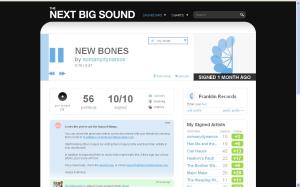I’ve been meaning to write this post for a while, but despite the unscheduled delay in proceedings posting during Mobile World Congress 09 seems appropriate…
A couple of weeks ago Waldemar Januszczak, the Sunday Times art critic wrote a damning review of the forth Tate Triennial; or rather he penned a damning feature on the state of the British art scene, which is currently on show at Tate Britain.
Admittedly a contemporary art retrospective wouldn’t ordinarily provide the stimulus for a DERT blog, but these are no ordinary times, and the review struck a chord. It was the concept of a triennial that prompted my thoughts to drift back to DERT, and over the past few weeks I’ve been mulling over the differences between the contemporary art world and that of the consumer tech industry. OK. OK. You might think that the differences are so stark that it shouldn’t take weeks to ‘mull over’, but bear with me…
Waldemar writes about “France in the 1860s, when the Paris salon became too powerful and the impressionist revolt needed to happen to revive art. The Tate is the salon of today: pompous, arrogant, all-powerful and utterly convinced of its superiority.” He refers to two exciting modern art movements that were a direct bi-product and reaction to the Tate’s pretentions (the Lisson Sculptors of the 1980s, and the YBA’s of the 1990s – Hirst, Emin and co.).
So how does this relate to DERT territory? Think of Damien Hirst (in his formaldehyde days, rather than encrusted skulls) as Spotify. Think of the Tate as the Brit Awards. Here is a company reacting against the accepted norm of the establishment (i.e. the music industry), and presenting a modern solution to a modern problem (i.e how to generate revenue, when the consumer demands free content). OK, so Hirst’s calf in a tank never resuscitated a flagging industry (well, unless you count the art market that boomed until recently) but you get my point. Tech Start-ups = young, revolutionary artists.
So back to Mobile World Congress. The very nature of the tech industry means that new pieces of ‘art’ are regularly showcased at trade events – CES, ISE, MWC etc etc. Start-ups clamour for noise at these shows and I suppose this is no different to how the Impressionists were overlooked by the Paris Salon. However, my point isn’t really about the struggle of new kids vs the old dogs. It’s more that we always look to the future. We’re all concerned with the next big thing, the upgrade, the new must-have piece of kit. True, coverage of this year’s event in Barcelona has looked at how the show differs from last year, especially regarding turnout. But this is economic observation, rather than a result of the new technologies and services on show.
Looking to the future is natural when emerging technologies evolve so quickly. But what if we took the time to reflect, as the art world does? What if the tech community held a triennial where the technologies of the previous three years were presented? Sure, there would be no commercial sense in a brand showcasing products whose shelf-life had expired, but what lessons would we learn, what patterns would emerge between trends, what new technologies would have already disappeared?
